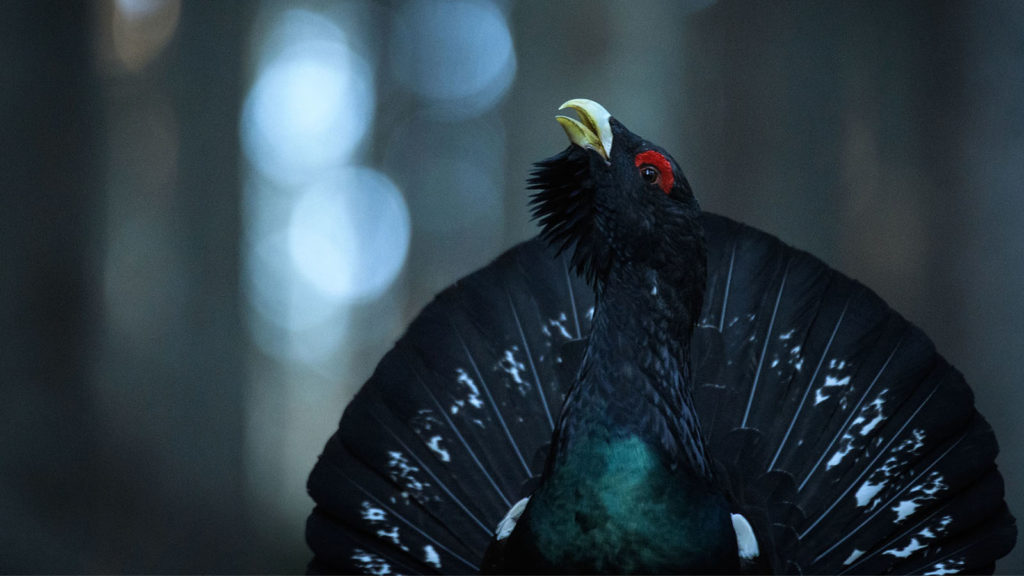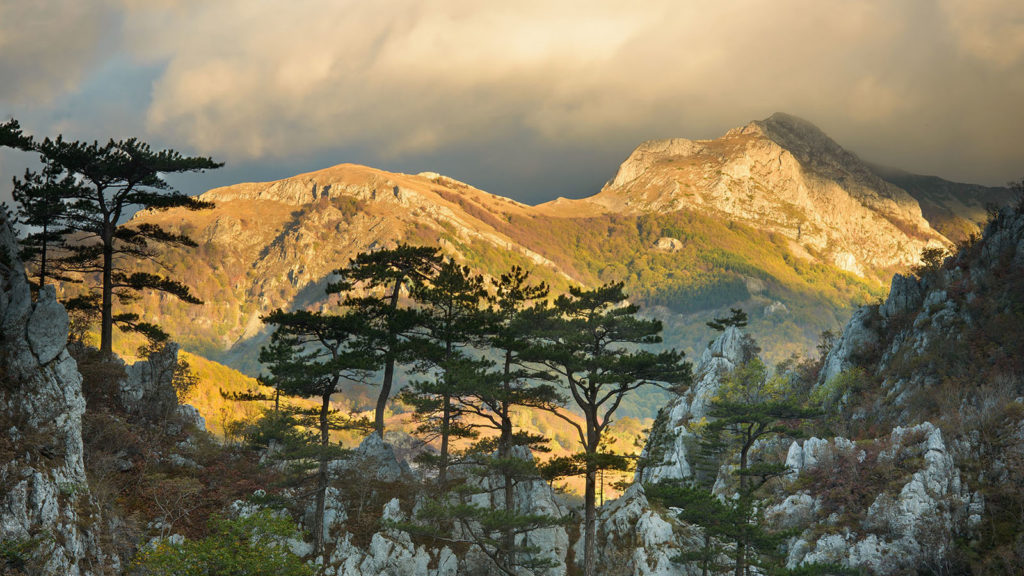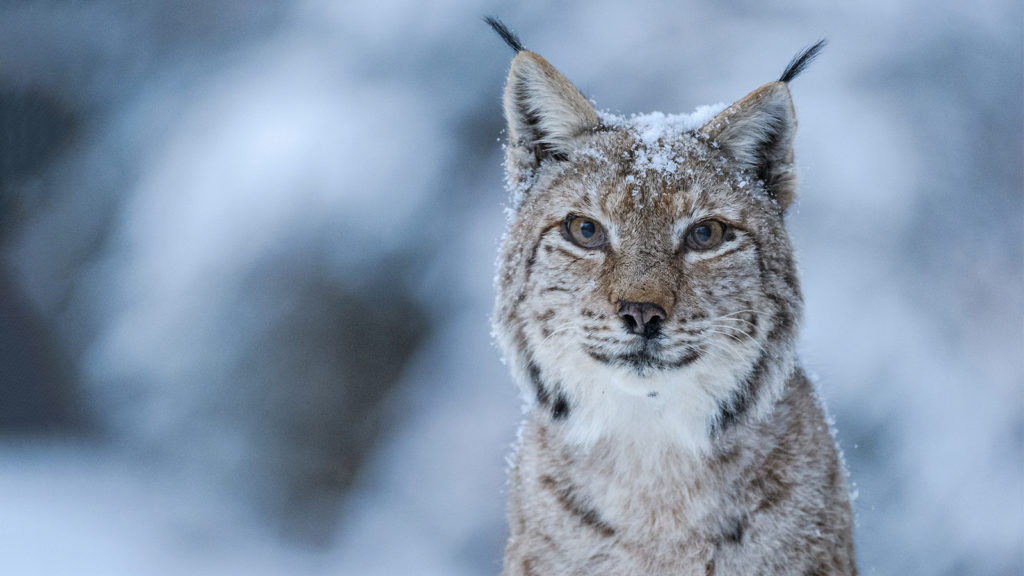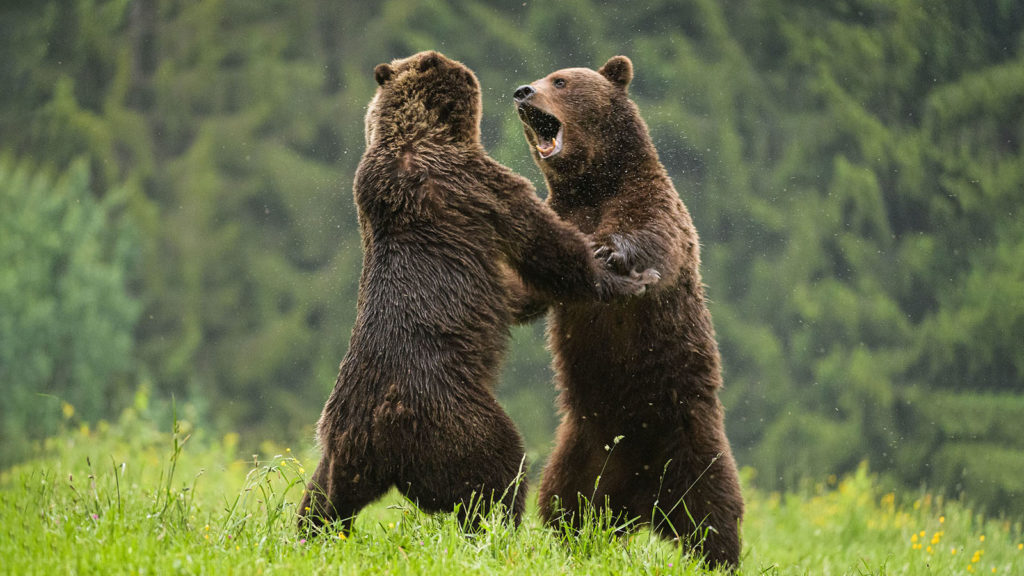Spain's bear population is growing, thanks to crucial conservation work.

Dan Dinu captures the awe-inspiring beauty of Romanian wilderness
Sometimes, wildlife photographer Dan Dinu can sit for hours, impervious to the frigid air of a Romanian winter, as his mind drifts to the melody of the forest. Idly listening to the chirping of birds, the creaking of tree-trunks in the wind, or the distant grunts of bison, he never has the intent of rushing. He’ll listen to the calls around him; to what nature has to say. He’ll hear the clicks of capercaillie, the soft scuttling of rodents across the snowy undergrowth, content to wait until the shot appears. And when it does, he won’t take it, he’ll receive it – just as nature offers it.
Dan has been practicing wildlife photography for more than 20 years. During that time, he has learned the true meaning of the word ‘perseverance’. Most recently, his focus has been on a landmark project – România Sălbatică, or Wild Romania, in English. Initiated with WWF way back in 2010, the mammoth work has become the largest photo/documentary project dedicated to Romanian wildlife. He and colleagues made more than 90 field trips to shoot the project; they spent over 450 days in the field; traveled more than 45,000 kilometers; and photographed 28 protected natural areas in Romania. The film premiered at the Transylvania International Film Festival in July 2021, and is due for international release in 2022.

Dinu has always been intrigued by nature, spending his childhood in the wild landscapes of Romania. He believes that fundamentally we are reliant on the experiences the natural world brings us. ‘Without it we are robots, doing things without even thinking about the wider world, which is larger than ourselves.’ His photographic and documentary project aims to replicate the experience of immersion in Romanian wilderness. The structure is deliberately open and free, as if the viewer is themselves exploring the wild landscape. ‘Not having the storyline developed was the best and worst part about it,’ says Dan. ‘We went out open-minded, filming everything we experienced. In editing, we actually found that the storyline unfolded all by itself.’ He recalls one memory of early morning in the Northern Carpathians. ‘We went out to our location in the dark of night, where you can only hear the sounds of the forest. It was pitch black, but slowly you begin to hear how the forest awakens, starting with small birds. Then after a while you hear the capercaillie – it’s a sound from science fiction.’
Dan’s mission is to inspire the international community to understand the value of Romanian nature. His country has more than six million hectares of forests, of which a significant portion is still untouched. These habitats, such as the Carpathian Mountains of Transylvania, contain one third of all European plant species. They are home to the most significant populations of large carnivores in Europe, including bears, wolves and lynx. Over 50 ‘When you have all this natural wealth, it’s hard to imagine a world without it,’ he says.
Often dubbed ‘Europe’s biodiversity capital’, Romania is the jewel in the crown of wild Europe. But it is not immune to the incursions that have devastated European wilderness areas over the centuries. With the fall of communism, Romania privatised many of its formerly nationalised forests. They were quickly over-harvested, and today, illegal logging threatens the integrity of many Romanian forests. Since 2000, Romania has lost 4.8 per cent of its tree cover. Global Forest Watch has calculated that 317,000 hectares of Romanian forest were lost to logging between 2001 and 2017 – the equivalent of 444,000 football pitches. Dinu now works with a number of environmental and conservation organisations across Romania, including Wild Wonders of Europe, Rewilding Europe and WWF Romania. He actively works with smaller NGOs and initiatives, including Foundation Conservation Carpathia (FCC) to document all they are trying to protect. Founded in 2009 by 12 philanthropists and conservationists, FCC was established with the goal of stopping illegal logging and of protecting a vast tract of the Carpathian forest for future generations. The ultimate vision is to return landholdings to the public domain for permanent protection in the form of a new national park.

‘Something that we wanted to do with the Wild Romania project was to help people understand the value of Romanian wilderness. When you have this natural wealth it’s hard to imagine a world without it.’ Dinu has regularly been shocked at the paucity of water in areas he’s travelled to for work, such as parts of sub-Saharan Africa and the Middle East. ‘In the rural areas of Romania, it’s natural for people to have nature by their side. But until it’s destroyed, it’s not easy to realise its value.’ That is where Dinu’s work of framing Romania’s intrinsic beauty through his lens comes into play. ‘That’s been the purpose of the 10 year project – to show people all the richness that we have here.'
‘Without perseverance as a photographer it’s hard to capture anything,’ says Dinu. That applies especially in Romania, he adds, where unlike Africa and North America, flagship species like bears, wolves and lynx take serious dedication to glimpse. Being a wildlife photographer comes with certain sacrifices of comfort. ‘I always say that what I cannot sleep during summer I will cover in Winter. If you work in nature this is a price worth paying.’

To Dinu, dedication enriches the encounter. He recalls one cold February evening this year, spent in the snowy forest of the Piatra Craiului National Park. ‘I was trying for more than two months, hoping to spot a lynx. We needed imagery for the film, but we didn’t have any luck. At the end I just wanted to give up. A friend suggested a new area and for two days we spent 12h each day in a small hide in the cold of winter. No luck either. But at the very last light, the magic happened’ he says. Dinu began to hear a distinctive call nearby. ‘There was the lynx. We took pictures from a distance, but he came toward us. The light was perfect, and snow was falling on his head from a branch. I took the perfect portrait, and I believe it was something like an offering. I think it’s better to observe, to be patient and to understand more about the ecosystems in which these animals live. At the end, with a lot of patience and perseverance, the luck will come’
But to many Europeans, wild nature conjures exotic images. Something ‘elsewhere’. For many years, Dinu was frustrated with his portfolio: he had taken pictures of black rhinos, chimpanzees, tigers, blue whales, but not the brown bears of Romania – his native land. ‘When I started to make the script for Romania Salbatica, I realised that I knew more about African wildlife than that of my own continent. We now need to reconnect with the nature we have on this continent. In many places, European wildlife is returning, but we have problems with connectivity between populations,’ says Dinu. ‘Our goal now should be to connect the islands that we’ve created; to embrace coexistence, and realise the value of the remaining wildlife we have.’

Dan’s top trait for wildlife photography success:
"Perseverance – and a lot of it"
Dan’s top item for surviving in the field:
"Creativity, if you have that you will forget about cold, hunger, bad luck and other not so important things. Of course I will need also a camera, creativity without a camera is not working for me."
Dan’s favourite book to bring to the field:
"A life on air by David Attenborough to be more optimistic that good things will happen, and Wild Romania photo book why not, although is a little heavy..."
Dan’s most challenging species to photograph:
"Eurasian lynx and wolf. First one checked, second… work in progress."
Other photographers that inspire you:
"Vincent Munier, if I need to pick one, but sometimes is not about the photographers but the story behind the photograph and in this case there are many."

Get social, share this article and raise awareness of efforts to conserve Romanian wildlife
Spain's bear population is growing, thanks to crucial conservation work.
Through the FIRNS initiative, TENT is working on a new blueprint for investment into nature recovery.
An amazing attendance at the RGS to celebrate Belizean conservation!

